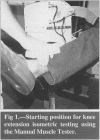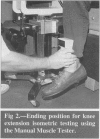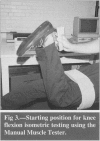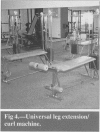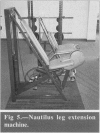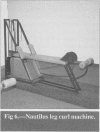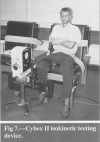Abstract
Three strength measurement methods for determining muscle strength and imbalance ratios of the knee were compared in 41 (23 female, 18 male) NCAA Division I track and field athletes. Peak quadriceps extensions and hamstring flexions were measured isotonically, isometrically, and isokinetically. Isokinetic measurements were performed on a Cybex II at 60°/s. Isometric extension and flexion measurements were performed using the Nicholas Manual Muscle Tester (Lafayette Instruments; Lafayette, Ind). Isotonic measurements were done on both Universal and Nautilus apparatuses. Testing order was randomized to avoid a treatment order effect. A repeated measures ANOVA and a post hoc Tukey test were used to compare the three methods of assessing strength and imbalance ratios of the knee. Absolute strength values were significantly different according to gender and mode of testing. Bilateral strength imbalance ratios for knee flexion were significantly lower for the Nautilus leg curl machine. Ipsilateral strength imbalance ratios were significantly greater for the Cybex II. Our results indicated that absolute strength values cannot be interchanged between testing modes. Except for Cybex II (ipsilateral) and Nautilus (bilateral knee flexion), strength imbalance ratios could be interchanged.
Full text
PDF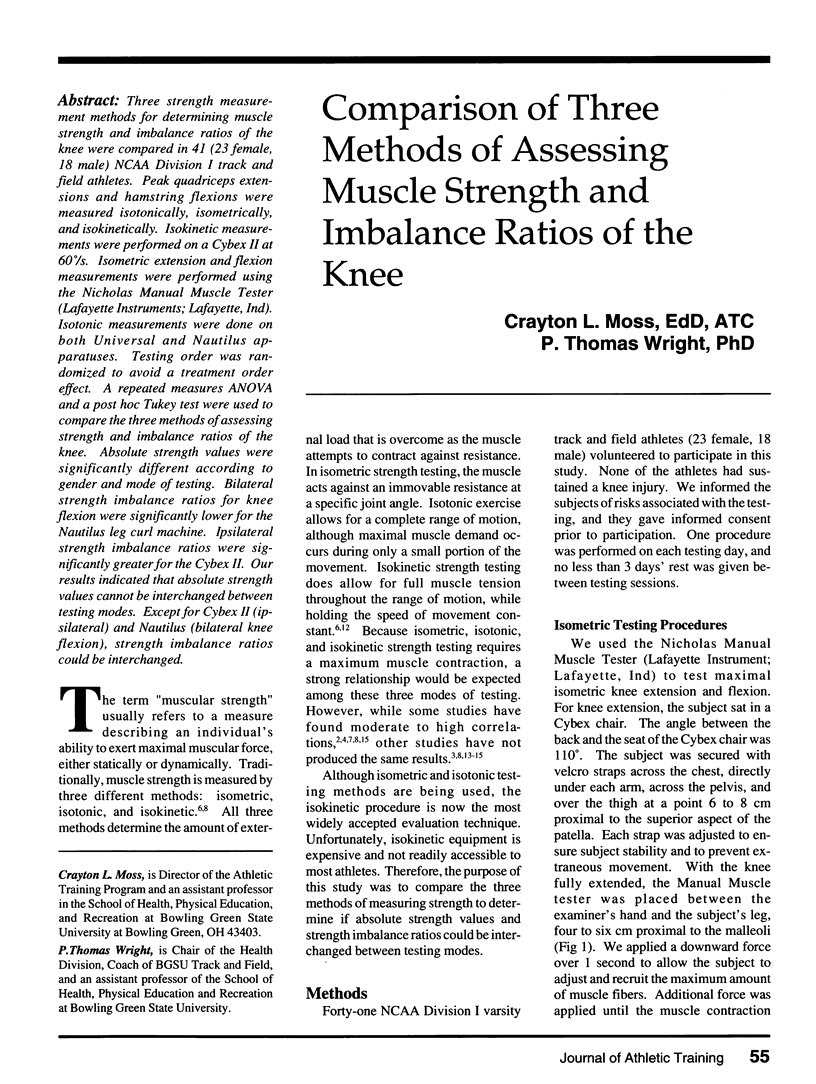
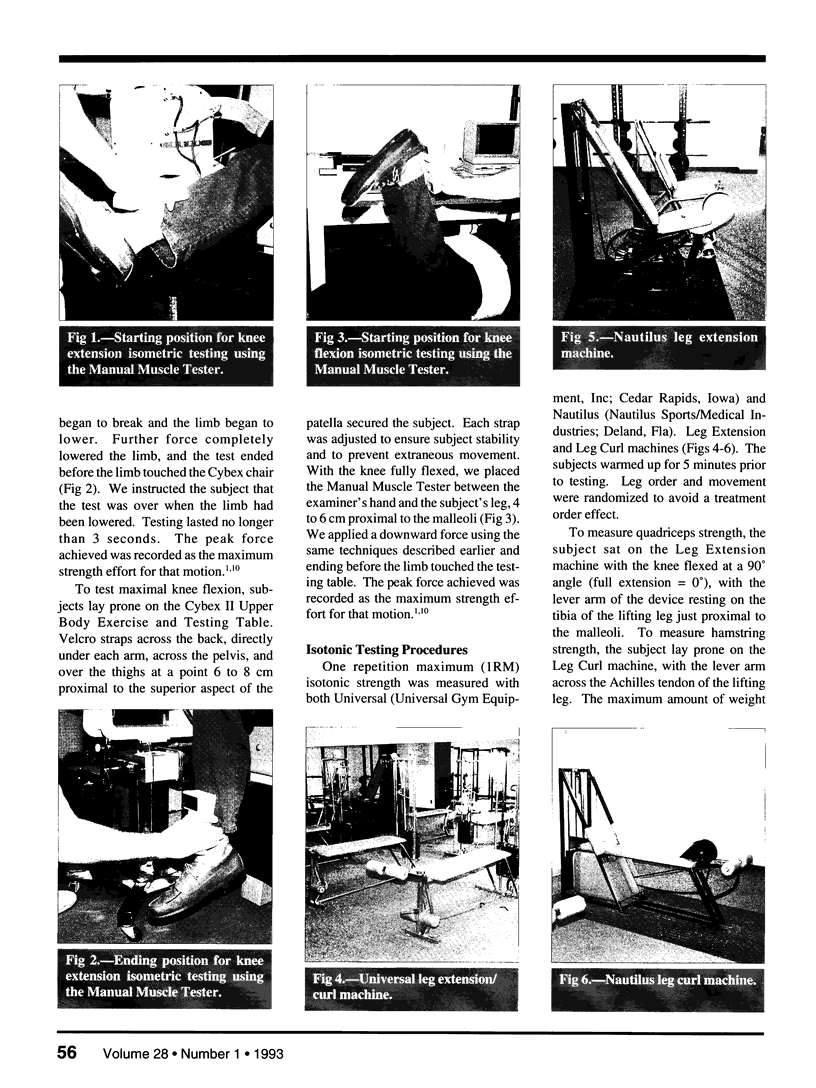
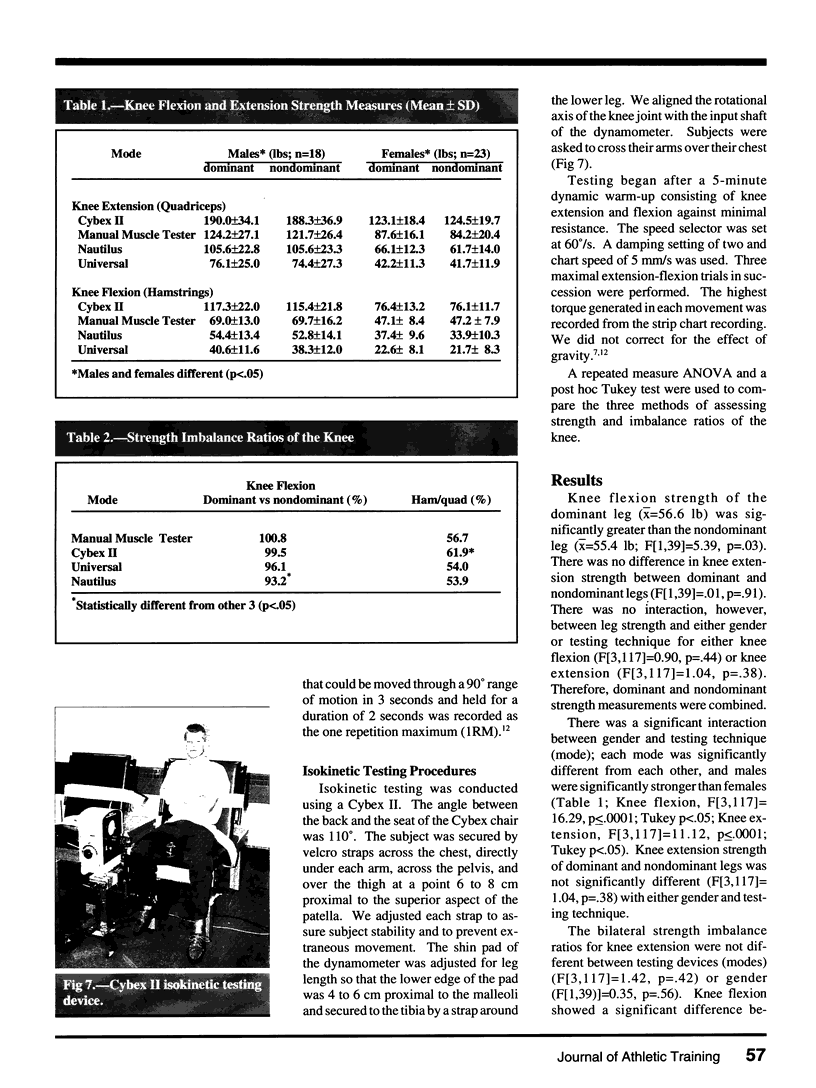
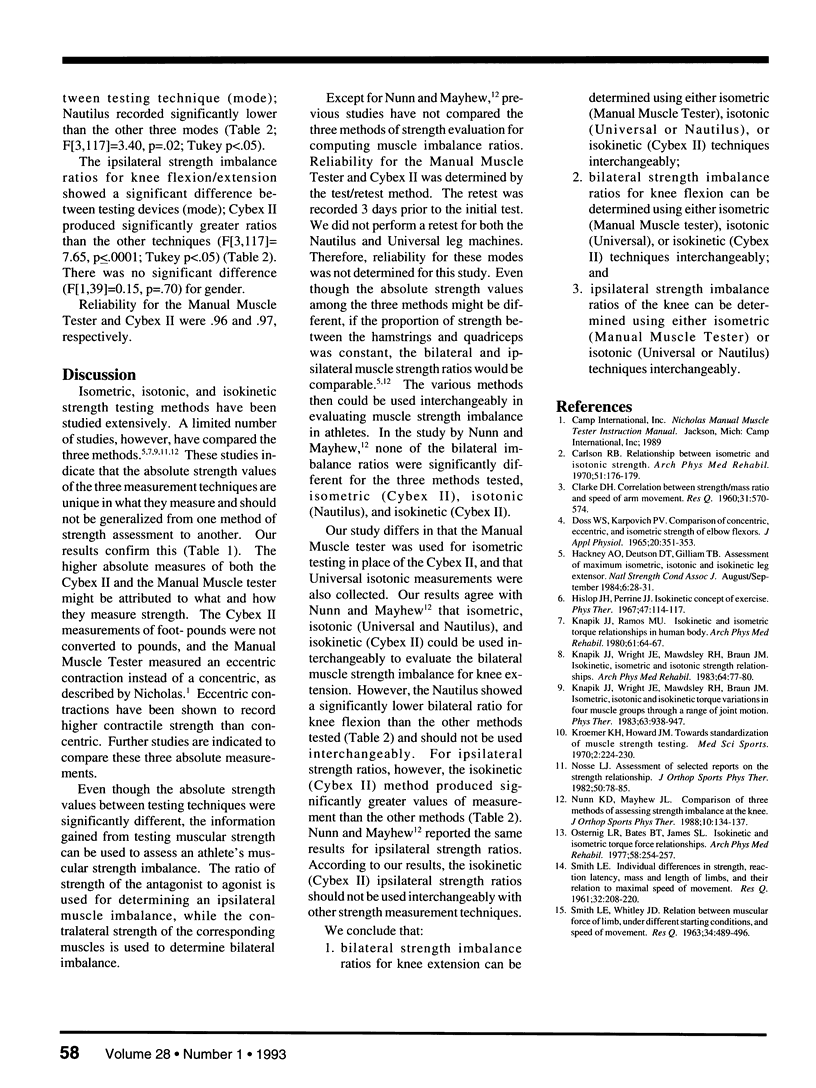
Images in this article
Selected References
These references are in PubMed. This may not be the complete list of references from this article.
- Carlson B. R. Relationship between isometric and isotonic strength. Arch Phys Med Rehabil. 1970 Mar;51(3):176–179. [PubMed] [Google Scholar]
- Hislop H. J., Perrine J. J. The isokinetic concept of exercise. Phys Ther. 1967 Feb;47(2):114–117. [PubMed] [Google Scholar]
- Knapik J. J., Ramos M. U. Isokinetic and isometric torque relationships in the human body. Arch Phys Med Rehabil. 1980 Feb;61(2):64–67. [PubMed] [Google Scholar]
- Knapik J. J., Wright J. E., Mawdsley R. H., Braun J. M. Isokinetic, isometric and isotonic strength relationships. Arch Phys Med Rehabil. 1983 Feb;64(2):77–80. [PubMed] [Google Scholar]
- Knapik J. J., Wright J. E., Mawdsley R. H., Braun J. Isometric, isotonic, and isokinetic torque variations in four muscle groups through a range of joint motion. Phys Ther. 1983 Jun;63(6):938–947. doi: 10.1093/ptj/63.6.938. [DOI] [PubMed] [Google Scholar]
- Osternig L. R., Bates B. T., James S. T. Isokinetic and isometric torque force relationships. Arch Phys Med Rehabil. 1977 Jun;58(6):254–257. [PubMed] [Google Scholar]



